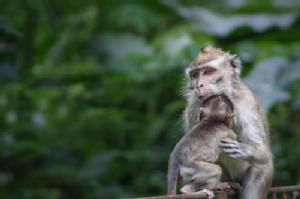Host adaptation to malaria
Background and past work
Malaria has had an enormous impact on human genetics. Malaria protective genetic variants have evolved and spread in sub Saharan Africa, much of Asia, and the region around the Mediterranean. We see malaria protective variants in populations living in countries which eradicated malaria decades ago. These malaria protective genetic variants can impact people’s health. One famous example of such a variant is the mutation responsible for the blood disorder sickle cell anaemia. Malaria can thus impact public health long after malaria parasites have been eradicated from a region.
The Penman group focuses on why different populations have evolved different solutions to the problem of malaria. Our research has shown that interactions amongst malaria protective disorders of haemoglobin can account for the relative rarity of sickle cell in the Mediterranean region (Penman et al, 2009Link opens in a new window), and for the exclusion of sickle cell from certain populations in south Asia (Penman et al 2011Link opens in a new window). The sheer diversity of adaptations to malaria could reduce the sensitivity of public health screens for the presence of disorders such as beta thalassaemia (Penman et al 2014Link opens in a new window).
There is a striking contrast between the way that humans have adapted to the two major species of human malaria parasite (Plasmodium falciparum and Plasmodium vivax). We recently showed that adaptations which block malaria infection in the first place (such as the Duffy negative adaptation against P. vivax) are unlikely to emerge if adaptive immunity against malaria virulence is gained quickly. Penman and Gandon, 2020Link opens in a new window, press releaseLink opens in a new window. This could account for why there are no widespread P. falciparum blocking adaptations.
Beta thalassaemia is one of the least-understood malaria protective genetic variants of humans. We recently collaborated with the Rayner and Cicuta groups at the University of Cambridge to study how P. falciparum invades beta thalassaemic cells. We found that beta thalassaemic cells display several invasion-relevant changes relative to non-beta thalassaemic cells, but these have opposing effects on invasion (Introini et al, 2022). Overall beta thalassaemic cells are invaded by P. falciparum at a similar rate to non-beta thalassaemic cells.
Current projects
Comparing human malaria adaptations with those of non-human species
 Image by Rossche |
Malaria is not just a problem for humans, and comparing human and non-human adaptations to malaria can deliver important mechanistic insights. In collaboration with colleagues at the University of Oxford we are investigating how macaques have evolved adaptations to malaria. Our preprint (Faust et al 2020Link opens in a new window) demonstrates that long-tailed macaque alpha globin is under malaria selection. |
Putting haemoglobin-based malaria adaptation into a wider context
The hypothesis that haemoglobin mutations might protect against malaria was first suggested in the 1940s, and some examples of malaria protective haemoglobin mutations are so well-known that they appear in GCSE and A level textbooks (e.g. the sickle cell mutation). However, the story presented is usually quite simple: haemoglobin mutations are elevated in frequency by selection from a malaria parasite. We propose that it is not always that simple. Susie Cant is studying how interactions between two species of malaria parasite (P. falciparum and P. vivax) have affected the evolution of alpha thalassaemia, and Rachael Ralph is studying how sickle cell spreads if a P. falciparum malaria infection blocking mutation is also present in the population. For more information please see their individual project pages.
Other ways to find out more...
 |
Bridget spoke to Ed and Laura on the SBIDER presents podcast about our recent malaria modelling results - check out the episode here! |
